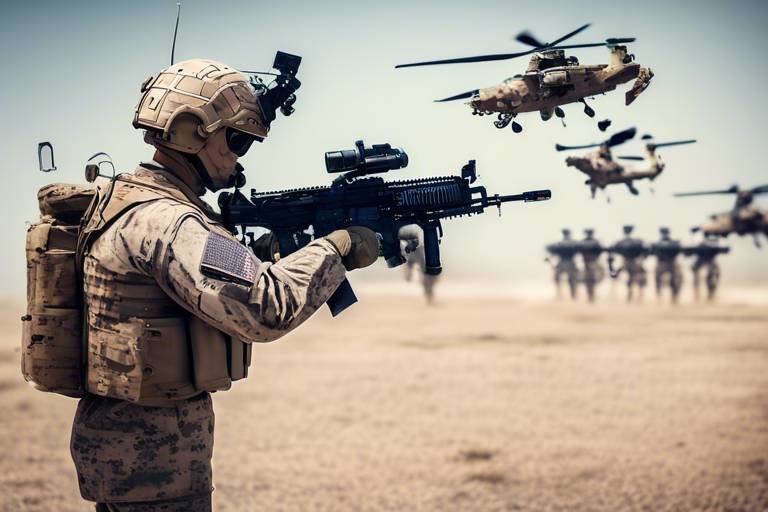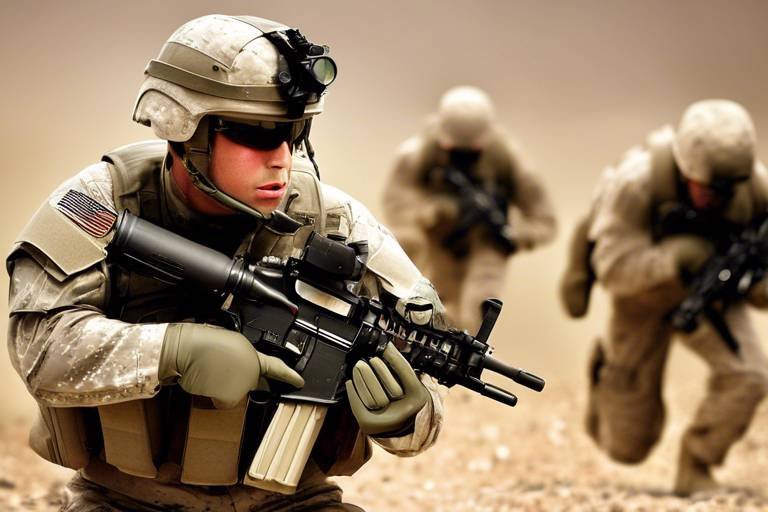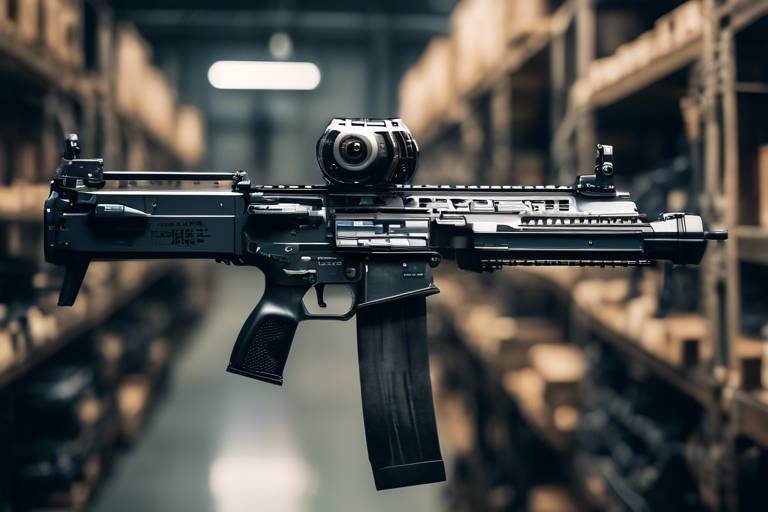How AI is Enhancing Tactical Decision-Making in Combat
In the ever-evolving landscape of warfare, artificial intelligence (AI) is proving to be a game-changer, redefining how military operations are conducted. Imagine a battlefield where decisions are made not just by human intuition but are backed by real-time data analysis and predictive insights. This is not a scene from a futuristic movie; it's the reality of modern combat. AI is stepping in to assist military leaders in making swift and effective decisions, ultimately enhancing the outcomes of tactical operations.
The integration of AI into military strategies is akin to adding a powerful engine to a well-built vehicle. It amplifies capabilities, allowing for faster and more accurate responses to dynamic battlefield conditions. With the ability to analyze vast amounts of data, AI systems can quickly identify patterns and trends that human analysts might miss. This capability is crucial when every second counts, and the difference between victory and defeat can hinge on the timeliness of information.
One of the most significant impacts of AI in combat is its ability to provide real-time data analysis. Picture a commander on the field equipped with a system that processes information from satellites, drones, and ground troops simultaneously. This integration allows for a comprehensive understanding of the battlefield, enabling commanders to make informed decisions almost instantaneously. AI serves as a digital assistant, tirelessly sifting through data to highlight critical insights that can inform tactical adjustments.
Moreover, the ability to integrate various sensors with AI technology enhances the collection and interpretation of battlefield information. For instance, drone surveillance has become a cornerstone of modern military operations. AI-powered drones can analyze enemy movements and terrain, providing invaluable support for strategic planning and risk assessment. These drones act like vigilant sentinels, constantly monitoring the environment and relaying crucial data back to commanders.
Another fascinating aspect of AI's role in combat is its use of predictive analytics. By leveraging historical data and machine learning algorithms, AI can forecast potential enemy actions with remarkable accuracy. This predictive capability allows military leaders to anticipate threats and devise strategies that are not just reactive but proactive. It's like having a crystal ball that reveals possible future scenarios, enabling commanders to prepare for various outcomes.
In addition to data analysis and prediction, AI-driven decision support systems play a pivotal role in enhancing tactical decision-making. These systems simulate various combat scenarios, evaluating different options and recommending optimal strategies based on real-time data. This capability significantly reduces the cognitive load on commanders, allowing them to focus on executing strategies rather than getting bogged down in data interpretation.
However, while the advantages of AI in military operations are substantial, it is essential to recognize the challenges and limitations that accompany its integration. Ethical considerations, data security, and the necessity for human oversight in critical situations are some of the hurdles that military organizations must navigate. The question arises: how can we ensure that AI enhances human decision-making without completely replacing the human element?
In conclusion, AI is not merely a tool; it is a transformative force that is reshaping tactical decision-making in combat. The future of warfare is undoubtedly intertwined with advancements in AI technology, and as we continue to explore its potential, the hope is that it will lead to more effective and ethical military operations. As we stand on the brink of this new era, one thing is clear: the battlefield of tomorrow will be smarter, faster, and more data-driven than ever before.
- How does AI improve decision-making in combat?
AI enhances decision-making by providing real-time data analysis, predictive insights, and decision support systems that allow military leaders to make informed choices quickly. - What role do drones play in AI-driven military operations?
AI-powered drones conduct aerial surveillance, analyze enemy movements, and collect data that supports strategic planning and risk assessment. - What are some challenges associated with AI in military contexts?
Challenges include ethical considerations, data security issues, and the need for human oversight to ensure that critical decisions are made responsibly. - Can AI fully replace human decision-makers in combat?
While AI can assist and enhance decision-making, it is unlikely to fully replace human judgment, especially in complex and unpredictable combat scenarios.

The Role of AI in Modern Warfare
This article explores the transformative role of artificial intelligence in military operations, focusing on its impact on tactical decision-making processes and the future of warfare.
Artificial Intelligence (AI) is not just a buzzword; it's a game-changer in the realm of modern warfare. Imagine being able to process mountains of data in the blink of an eye and make decisions that could determine the outcome of a battle. That's the power of AI. It’s revolutionizing combat by providing military leaders with the tools they need to make informed decisions swiftly and effectively. With AI, the fog of war becomes clearer, allowing for enhanced situational awareness and a more strategic approach to combat.
One of the most significant contributions of AI is its ability to analyze real-time data. In the heat of battle, every second counts. AI systems can sift through vast amounts of information from various sources—be it satellite imagery, drone surveillance, or ground troop reports—allowing commanders to gain crucial insights into battlefield dynamics. This capability enables them to make timely tactical adjustments that could mean the difference between victory and defeat.
Moreover, AI technologies are not just about processing data; they are about integrating and interpreting it. For instance, consider the integration of AI with advanced sensors. This fusion enhances the collection and interpretation of battlefield information, leading to improved decision-making capabilities and operational efficiency. Imagine a scenario where a commander receives a real-time update about enemy troop movements, coupled with predictive analytics that forecast potential threats. This kind of information can significantly alter the course of action, allowing for a more proactive approach to combat.
AI systems excel in real-time data analysis, which is crucial in a combat environment. They can process information from various sources simultaneously, providing a comprehensive view of the battlefield. This capability allows military leaders to not only react to current situations but also to anticipate future developments. For example, if AI detects unusual patterns in enemy movements, it can alert commanders to potential ambushes or flanking maneuvers, enabling them to adapt their strategies accordingly.
Integrating AI with advanced sensors is another leap forward in military technology. This integration enhances the accuracy and speed of data collection from the battlefield. With AI, data from sensors can be analyzed on-the-fly, providing military personnel with a unified operational picture. This means that commanders can make decisions based on a complete understanding of the battlefield, rather than piecemeal information that could lead to errors.
AI-powered drones are at the forefront of this technological revolution. They provide aerial surveillance that is not only efficient but also incredibly insightful. By analyzing enemy movements and terrain, these drones support strategic planning and risk assessment in combat scenarios. Imagine a drone that can autonomously identify enemy positions and relay that information back to ground troops in real-time. This level of situational awareness is invaluable in modern warfare.
Using historical data and machine learning algorithms, AI can forecast potential enemy actions. This capability helps military leaders to anticipate threats and strategize effectively. Think of it as having a crystal ball that doesn't just show the future, but also offers insights into the best courses of action. By understanding what the enemy might do next, commanders can prepare their forces and resources accordingly, leading to a more decisive and effective response.
AI-driven decision support systems are essential tools for modern military commanders. These systems simulate various combat scenarios, evaluate options, and recommend optimal strategies based on real-time data. This means that instead of relying solely on instinct or experience, commanders can make decisions backed by data-driven insights. This not only enhances the effectiveness of military operations but also reduces the risk associated with high-stakes decisions.
AI technology significantly improves situational awareness by synthesizing information from multiple sources, enabling military personnel to understand the battlefield context more comprehensively.
AI systems can fuse data from satellites, reconnaissance missions, and ground troops, creating a unified operational picture that enhances decision-making processes.
AI algorithms are adept at identifying potential threats quickly, allowing military forces to respond proactively and minimize risks during combat operations.
Despite its advantages, the integration of AI in military decision-making faces challenges, including ethical considerations, data security, and the need for human oversight in critical situations.
- How does AI improve decision-making in combat? AI improves decision-making by providing real-time data analysis, predictive insights, and enhanced situational awareness.
- What role do drones play in AI-enhanced warfare? Drones provide aerial surveillance and analyze enemy movements, supporting strategic planning and risk assessment.
- Are there ethical concerns with using AI in military operations? Yes, there are ethical considerations regarding data security, accountability, and the potential for autonomous weaponry.

Real-Time Data Analysis
In the fast-paced world of modern warfare, has become a game-changer for military operations. Imagine being on a battlefield where every second counts, and you have the ability to process and analyze vast amounts of data at lightning speed. This is precisely what AI brings to the table. By harnessing the power of advanced algorithms and machine learning, AI systems can sift through data from multiple sources—such as satellite imagery, drone feeds, and ground troop reports—to provide commanders with crucial insights that inform their tactical decisions.
One of the standout features of AI in this realm is its capability to integrate various sensors effectively. These sensors gather data on enemy movements, terrain conditions, and even environmental factors. The integration of AI with these sensors means that the information is not only collected but also interpreted in real-time, leading to improved decision-making capabilities. For instance, a commander can receive alerts about incoming enemy units while simultaneously assessing the best tactical response based on the current battlefield dynamics.
When we talk about sensor integration, we're essentially referring to the seamless connection between different data-gathering technologies. AI systems can take inputs from:
- Ground sensors that detect troop movements
- Aerial drones that provide real-time surveillance
- Satellite imagery that offers a broader view of the battlefield
This fusion of information leads to an enriched operational picture, allowing military leaders to make informed decisions swiftly. For example, if ground sensors detect unusual activity, AI can correlate this with drone footage and satellite data to provide a comprehensive understanding of the situation, enabling timely tactical adjustments.
Speaking of drones, they are a pivotal element in the landscape of modern combat. AI-powered drones are not just flying cameras; they are intelligent systems capable of analyzing enemy movements and assessing terrain conditions. With the ability to process data on the fly, these drones can identify patterns and anomalies that a human operator might miss. This capability supports strategic planning and risk assessment, ensuring that military leaders have the most accurate information at their fingertips.
Another fascinating aspect of AI in real-time data analysis is its use of predictive analytics. By leveraging historical data and advanced machine learning techniques, AI can forecast potential enemy actions. This allows military leaders to anticipate threats and develop strategies proactively. Think of it as having a crystal ball that not only shows you the present but also gives you a glimpse into the future. This foresight can be the difference between victory and defeat on the battlefield.
Finally, AI-driven decision support systems are invaluable tools for commanders. These systems can simulate various combat scenarios, evaluate multiple options, and recommend the optimal strategies based on real-time data. Imagine being able to run through different battle plans in a matter of seconds, weighing the pros and cons of each approach. This capability allows military leaders to make informed choices that can significantly impact the outcome of engagements.
In summary, the integration of AI into real-time data analysis is not just a technological advancement; it is a fundamental shift in how military operations are conducted. By enhancing situational awareness, improving decision-making processes, and providing predictive insights, AI is paving the way for a new era of warfare.
- How does AI improve decision-making in combat?
AI enhances decision-making by providing real-time data analysis, predictive insights, and simulating combat scenarios, enabling commanders to make informed choices quickly. - What role do drones play in AI-enhanced warfare?
AI-powered drones offer aerial surveillance and analysis of enemy movements, significantly contributing to strategic planning and risk assessment. - Are there any ethical concerns regarding AI in military operations?
Yes, the integration of AI in combat raises ethical concerns, including the potential for autonomous weapons and the need for human oversight in critical situations.
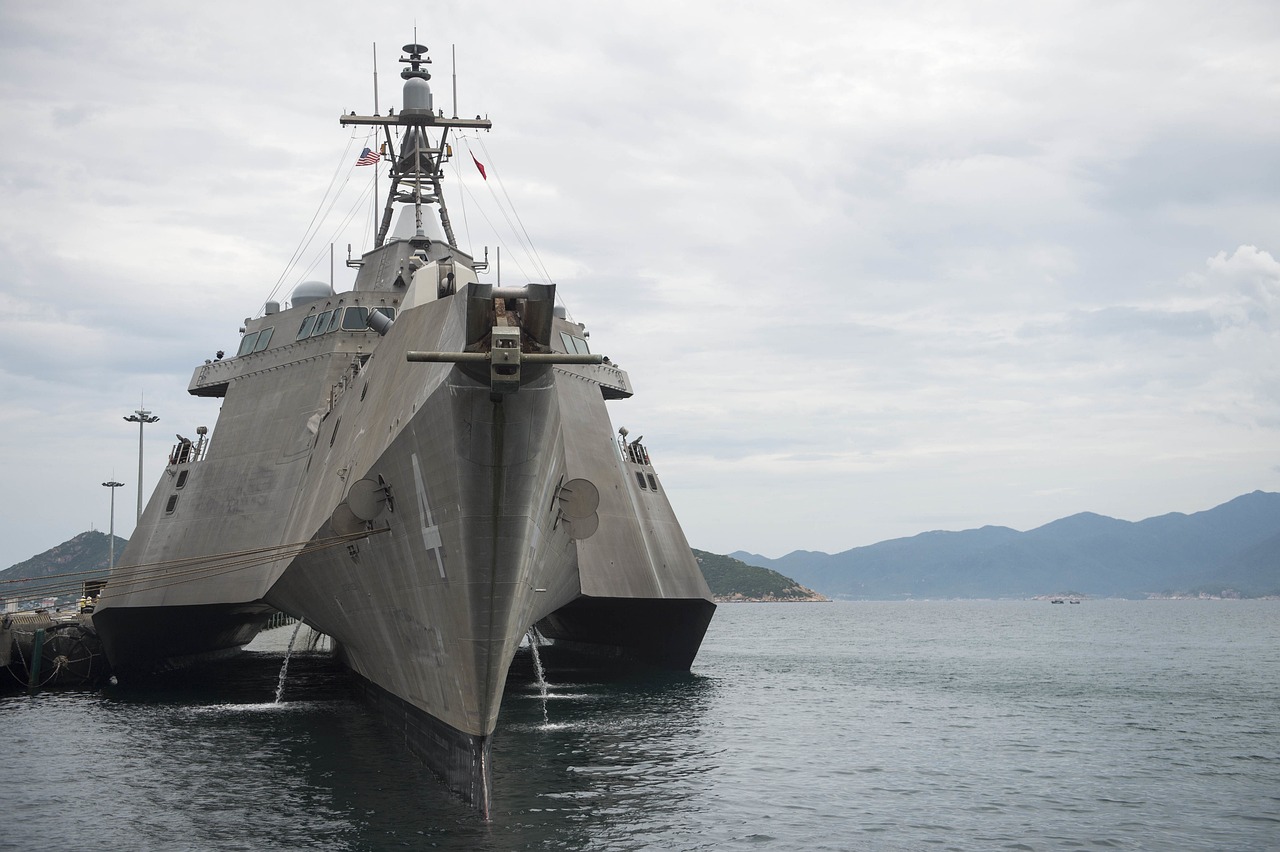
Sensor Integration
In the ever-evolving landscape of modern warfare, stands out as a game-changer. By combining artificial intelligence with advanced sensor technologies, military operations can achieve unprecedented levels of situational awareness and tactical efficiency. Imagine a battlefield where every movement is monitored, every sound is analyzed, and every decision is supported by real-time data—this is the reality that sensor integration brings to the forefront.
At the heart of this integration is the ability to collect and process data from a myriad of sources. Whether it's satellite imagery, ground reconnaissance, or drone surveillance, AI systems can seamlessly fuse this information to create a comprehensive operational picture. This synthesis not only enhances decision-making but also allows commanders to visualize the battlefield in ways that were previously unimaginable. For instance, with real-time data feeds, military leaders can observe troop movements and environmental changes instantaneously, enabling them to respond to threats with lightning speed.
Moreover, the integration of sensors is not just about gathering data; it's about interpreting it effectively. AI algorithms can analyze patterns and trends in the data, identifying anomalies that might indicate enemy activity. This capability is crucial in a combat scenario where every second counts. By utilizing sophisticated machine learning techniques, AI can learn from past engagements, continuously improving its threat detection capabilities. For example, if a particular area has seen increased enemy movement in the past, the system can flag it as a potential hotspot, prompting commanders to allocate resources accordingly.
To illustrate the impact of sensor integration, consider the following table that outlines key advantages:
| Advantage | Description |
|---|---|
| Enhanced Data Collection | Combines inputs from various sensors for a holistic view of the battlefield. |
| Improved Decision-Making | Real-time insights allow for quicker and more informed tactical choices. |
| Proactive Threat Identification | AI can predict potential threats based on historical data and current patterns. |
| Resource Optimization | Helps allocate military assets efficiently based on real-time needs. |
In summary, sensor integration powered by AI is transforming how military operations are conducted. By leveraging advanced technologies, militaries can not only enhance their operational capabilities but also ensure that their decision-making processes are grounded in accurate and timely information. As we move forward, the synergy between AI and sensor technologies will undoubtedly shape the future of combat, making it more efficient and responsive than ever before.
- What is sensor integration in military operations? Sensor integration refers to the combination of various sensor technologies with artificial intelligence to enhance data collection, analysis, and decision-making in combat scenarios.
- How does AI improve situational awareness? AI improves situational awareness by synthesizing data from multiple sources, providing a comprehensive view of the battlefield that helps commanders make informed decisions.
- What are the challenges of implementing sensor integration? Challenges include data security, the need for human oversight, and ethical considerations related to surveillance and decision-making.
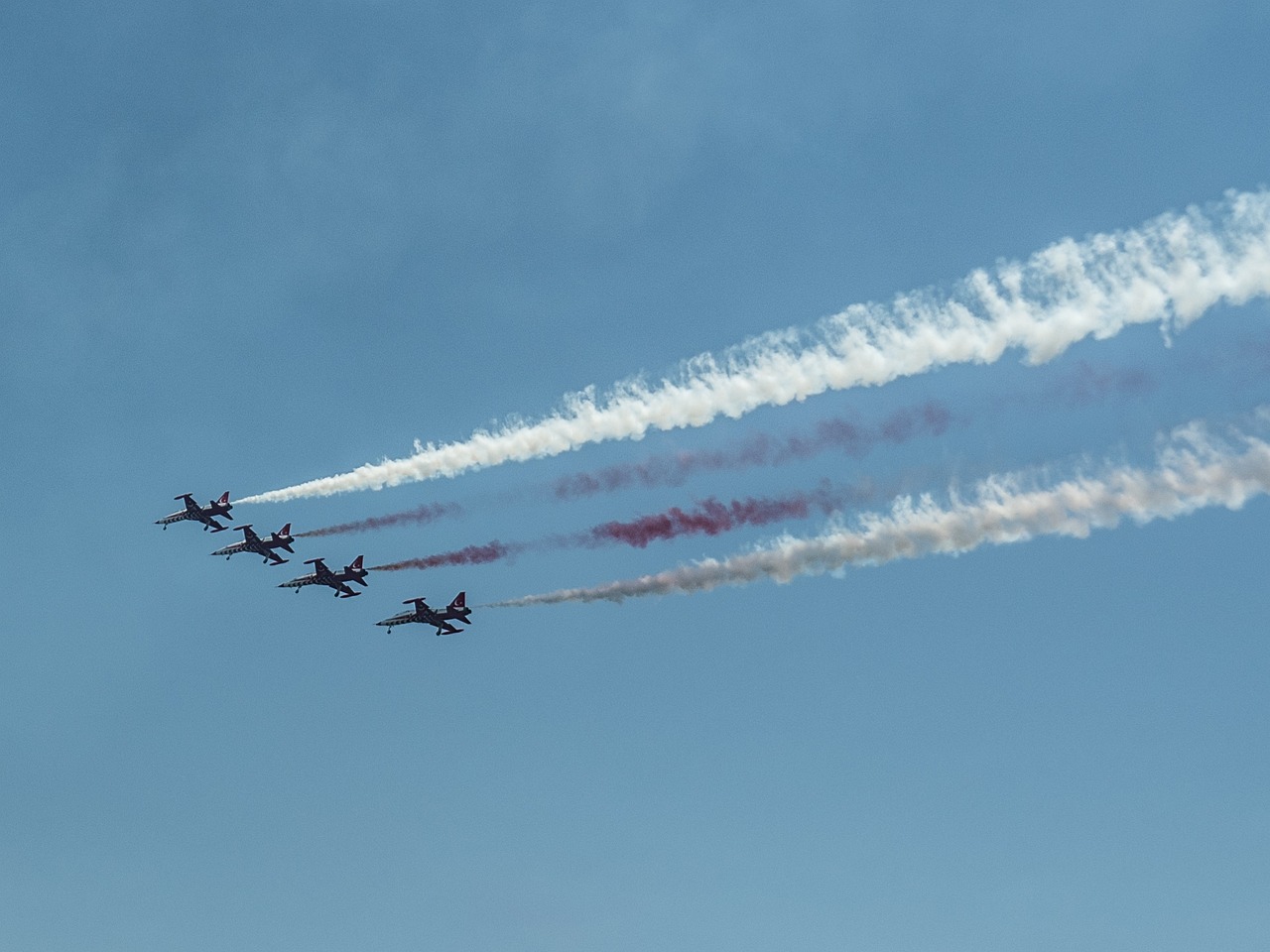
Drone Surveillance
In the ever-evolving landscape of modern warfare, has emerged as a game-changer. Imagine having a pair of eyes in the sky, constantly scanning the battlefield, providing invaluable information that can mean the difference between victory and defeat. AI-powered drones are not just flying cameras; they are sophisticated machines equipped with advanced sensors and algorithms that analyze enemy movements, terrain, and even weather conditions in real time. This capability allows military leaders to make informed decisions swiftly, ensuring that they stay one step ahead of their adversaries.
One of the most striking features of drone surveillance is its ability to gather and process vast amounts of data. These drones can operate in various environments, from urban settings to rugged terrains, collecting data that is then analyzed using AI algorithms. The result? A comprehensive picture of the battlefield that enhances strategic planning and risk assessment. For instance, a drone can identify enemy troop concentrations, track supply routes, and even detect changes in environmental conditions that could affect troop movements.
Furthermore, the integration of AI in drone technology enables predictive capabilities. By analyzing historical data and current battlefield dynamics, AI can forecast potential enemy actions. This predictive analytics aspect is crucial; it allows commanders to anticipate threats and develop counter-strategies before the enemy even makes a move. Think of it as having a chess opponent who reveals their next few moves—this foresight can be invaluable in tactical planning.
Moreover, the deployment of drones for surveillance purposes minimizes the risks to human personnel. By utilizing drones, military forces can gather intelligence in hostile environments without putting soldiers in harm's way. This not only enhances the safety of troops but also allows for more aggressive reconnaissance missions. In scenarios where ground troops might be vulnerable, drones can provide a safer alternative to gather crucial information.
However, it's essential to acknowledge that while drone surveillance offers numerous advantages, it also comes with its own set of challenges. Issues such as data security, ethical considerations regarding privacy, and the potential for misuse of drone technology are critical discussions that military leaders must navigate. As we continue to integrate AI into military operations, balancing these challenges with the benefits of enhanced surveillance will be key to future success on the battlefield.
- What are the main advantages of using drones for surveillance in combat?
Drones provide real-time data, reduce risks to personnel, and enhance situational awareness, allowing for better tactical decision-making. - How does AI improve the effectiveness of drone surveillance?
AI analyzes large datasets quickly, offers predictive insights, and helps in identifying patterns that human operators might miss. - What challenges do military forces face when using drones for surveillance?
Challenges include data security, ethical concerns, and the need for human oversight to prevent misuse and ensure accountability.
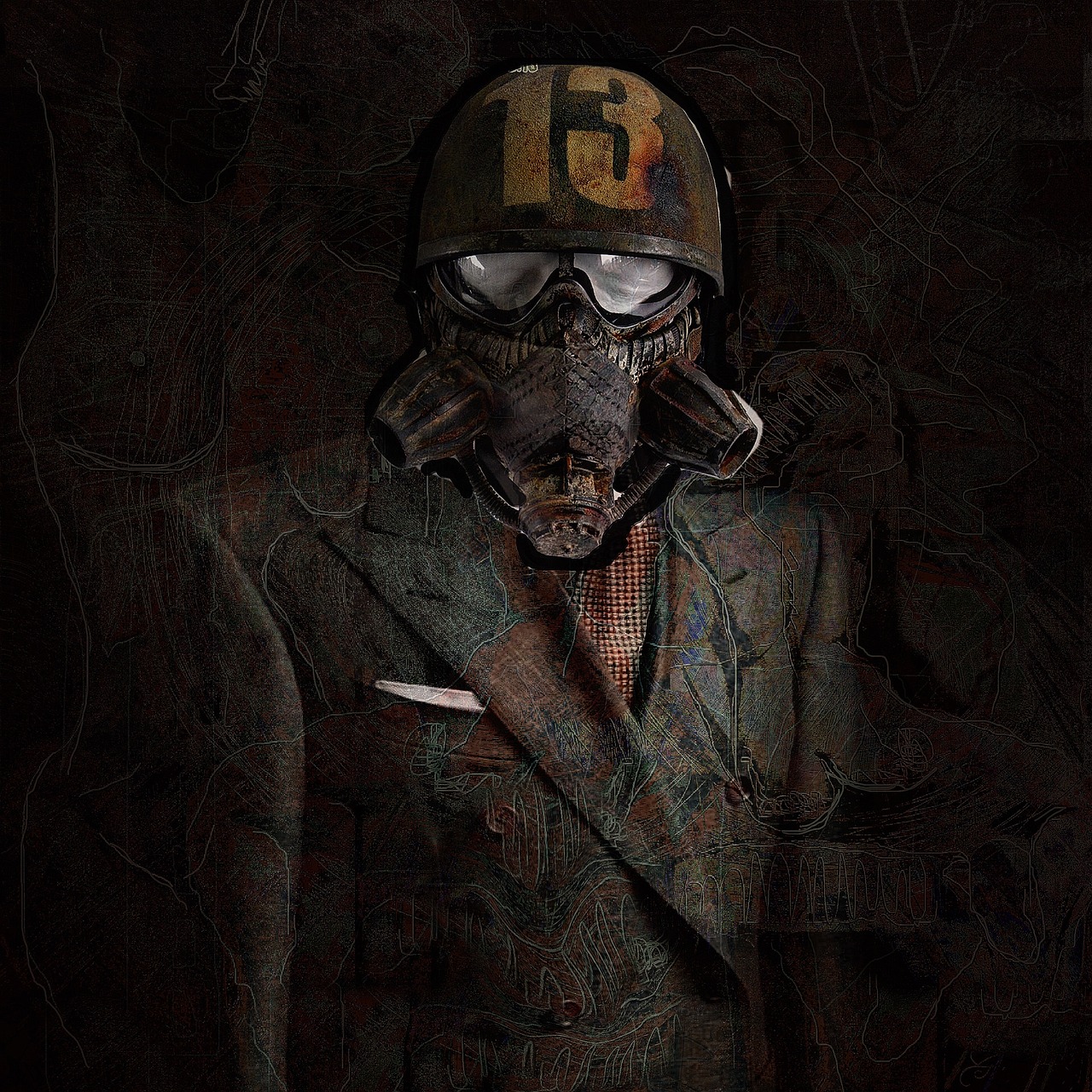
Predictive Analytics
Predictive analytics is a game-changer in the realm of military strategy. Imagine having the ability to foresee potential enemy movements before they even happen. With the power of artificial intelligence and machine learning, military leaders can analyze historical data and real-time inputs to forecast actions and prepare accordingly. This capability is akin to having a crystal ball that not only shows what might happen next but also provides insights on how to respond effectively.
At the core of predictive analytics lies the ability to process vast amounts of data from various sources. This includes everything from historical battle reports to current troop movements and environmental conditions. By employing sophisticated algorithms, AI can identify patterns and trends that human analysts might overlook. For instance, if a particular enemy unit tends to attack after a specific event, AI can flag this behavior, allowing commanders to set up ambushes or defensive strategies in anticipation of the attack.
The benefits of predictive analytics extend beyond mere forecasting. It also enhances the overall decision-making framework within military operations. Consider the following:
- Scenario Simulation: AI can simulate various battlefield scenarios based on predictive models, allowing commanders to visualize potential outcomes and refine their strategies.
- Resource Allocation: By predicting where and when engagements are likely to occur, military leaders can allocate resources more efficiently, ensuring that troops and equipment are in the right place at the right time.
- Risk Assessment: Predictive analytics helps in evaluating the risks associated with different courses of action, enabling leaders to make informed choices that minimize potential losses.
As military operations become increasingly complex, the integration of predictive analytics into tactical decision-making processes is not just beneficial; it is essential. The ability to anticipate enemy actions and adapt strategies in real-time can mean the difference between success and failure on the battlefield. By leveraging data-driven insights, military leaders are better equipped to navigate the uncertainties of combat, ensuring that they remain one step ahead of their adversaries.
- What is predictive analytics in military operations?
Predictive analytics involves using AI and machine learning to analyze historical and real-time data to foresee potential enemy actions and optimize military strategies. - How does AI improve decision-making in combat?
AI enhances decision-making by processing vast amounts of data quickly, providing insights, simulating scenarios, and identifying potential risks, enabling commanders to make informed choices. - What are the challenges of using AI in military operations?
Challenges include ethical considerations, data security concerns, and the need for human oversight to ensure that critical decisions are made with appropriate judgment.

Decision Support Systems
In the high-stakes environment of modern warfare, decision support systems (DSS) powered by artificial intelligence are becoming indispensable tools for military commanders. These systems leverage advanced algorithms and vast datasets to assist leaders in making informed decisions under pressure. Imagine being in a cockpit, where every second counts, and the weight of your choices could change the course of a battle. DSS provides that extra edge, simulating various combat scenarios and evaluating potential outcomes, allowing commanders to visualize the battlefield before making a move.
One of the most remarkable features of AI-driven decision support systems is their ability to process and analyze real-time data from multiple sources. This capability means that commanders can receive up-to-the-minute information about troop movements, environmental conditions, and enemy positions. For example, if a battalion is engaged in a firefight, the DSS can analyze data from drones, reconnaissance units, and satellite imagery, synthesizing this information into actionable insights. This is not just data; it's a lifeline in chaotic situations where every moment matters.
Furthermore, these systems employ machine learning techniques to continuously improve their recommendations. As they process more data, they become better at predicting enemy actions and suggesting optimal responses. This aspect of DSS is akin to having a seasoned strategist by your side, one who learns from every encounter and adapts strategies accordingly. The integration of historical data allows these systems to forecast potential enemy maneuvers, giving commanders a strategic advantage. For instance, if historical patterns show that an enemy typically flanks from a particular direction, the DSS can alert the commander to prepare defenses in that area.
To illustrate the impact of decision support systems, consider the following table that highlights key features and benefits:
| Feature | Benefit |
|---|---|
| Real-time Data Processing | Enables rapid response to changing battlefield conditions |
| Scenario Simulation | Helps commanders visualize outcomes before making decisions |
| Predictive Analytics | Anticipates enemy movements and strategies |
| Integration of Multiple Data Sources | Provides a comprehensive operational picture |
| Continuous Learning | Improves decision-making recommendations over time |
In conclusion, decision support systems are transforming the landscape of tactical decision-making in combat. They empower military leaders with the tools to analyze complex scenarios swiftly and accurately, ultimately enhancing operational effectiveness. As technology continues to evolve, we can expect these systems to become even more sophisticated, integrating deeper levels of artificial intelligence and machine learning, making them crucial allies on the battlefield.
- What are decision support systems?
Decision support systems are AI-powered tools that assist military commanders in making informed decisions by simulating various combat scenarios and analyzing real-time data. - How do decision support systems improve military strategy?
By providing predictive analytics and scenario simulations, these systems help commanders anticipate enemy actions and strategize effectively. - What data sources do decision support systems integrate?
They integrate data from drones, satellites, reconnaissance missions, and ground troops to create a unified operational picture. - Are there limitations to decision support systems?
Yes, while they offer significant advantages, challenges such as data security, ethical considerations, and the need for human oversight remain critical.

Enhancing Situational Awareness
In the realm of modern warfare, situational awareness is paramount. It refers to the ability to perceive and comprehend the battlefield environment, which is essential for making informed tactical decisions. With the advent of artificial intelligence, this critical aspect of military operations has undergone a significant transformation. AI technologies synthesize vast amounts of data from diverse sources, enabling military personnel to gain a comprehensive understanding of the battlefield context.
One of the key ways AI enhances situational awareness is through information fusion. By integrating data from various platforms—such as satellites, reconnaissance missions, and ground troops—AI systems create a unified operational picture. This cohesive view not only improves the clarity of the information available but also allows commanders to see connections and patterns that may have otherwise gone unnoticed. Imagine trying to solve a complex puzzle; each piece of information is a part of that puzzle, and AI helps to fit them together seamlessly.
Furthermore, AI algorithms excel at threat detection. In combat scenarios, the ability to quickly identify potential threats can mean the difference between success and failure. These algorithms analyze data streams in real time, scanning for anomalies that could signify enemy movements or hostile actions. As a result, military forces can respond proactively, minimizing risks and enhancing their operational effectiveness. For instance, an AI system might detect unusual troop formations or equipment movements, alerting commanders to potential ambushes or attacks before they happen.
Moreover, the integration of AI into situational awareness systems fosters a more collaborative environment among military units. By providing a shared understanding of the battlefield, AI enables different branches of the military to coordinate their efforts more effectively. This synergy is crucial, especially in joint operations where forces from different services must work together seamlessly. The enhanced communication facilitated by AI not only streamlines operations but also builds trust among units, allowing them to rely on one another in high-pressure situations.
However, it's important to recognize that while AI significantly enhances situational awareness, it is not without its challenges. The reliance on technology raises questions about data security and the potential for cyber threats. As military systems become more interconnected, the risk of adversaries exploiting vulnerabilities increases. Therefore, maintaining robust cybersecurity measures is essential to protect sensitive information and ensure operational integrity.
In summary, AI is revolutionizing situational awareness in combat by providing real-time data analysis, facilitating information fusion, and enhancing threat detection capabilities. As military operations continue to evolve, the integration of AI will undoubtedly play a crucial role in shaping the future of warfare, allowing commanders to make better-informed decisions that could ultimately save lives and achieve mission success.
- What is situational awareness in military operations?
Situational awareness refers to the perception and understanding of the battlefield environment, which is crucial for making informed tactical decisions. - How does AI enhance situational awareness?
AI enhances situational awareness by synthesizing data from multiple sources, improving information clarity, and enabling quicker threat detection. - What are the challenges of using AI in military decision-making?
Challenges include data security risks, ethical considerations, and the need for human oversight in critical situations. - Can AI completely replace human decision-making in combat?
No, while AI can provide valuable insights and support, human judgment remains essential, especially in complex and unpredictable combat scenarios.
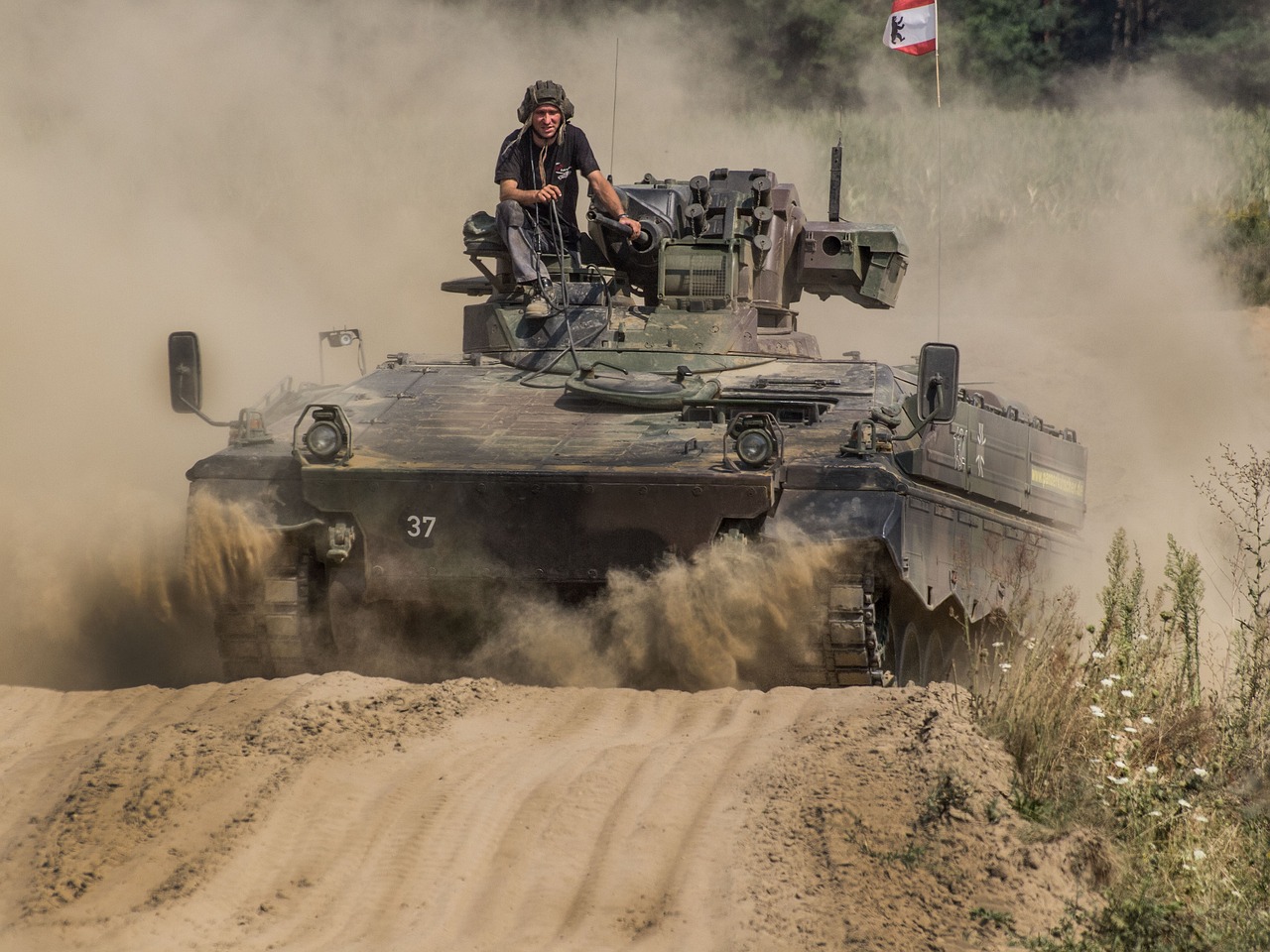
Information Fusion
In the chaotic environment of modern warfare, emerges as a game-changing capability that significantly enhances military operations. Imagine being a commander in the heat of battle, surrounded by a cacophony of data streaming in from various sources—drones overhead, ground troops reporting in, and satellite imagery providing a bird's-eye view. How do you sift through this avalanche of information to make informed decisions? This is where AI-driven information fusion comes into play.
At its core, information fusion involves the integration of data from multiple sources to create a comprehensive operational picture. AI systems are designed to analyze and synthesize this data in real time, enabling military leaders to have a clearer understanding of the battlefield dynamics. By combining inputs from
- satellite reconnaissance
- drone surveillance
- ground troop reports
Consider the example of a military operation where troops are advancing towards an enemy stronghold. With AI-enabled information fusion, commanders can receive real-time updates on enemy troop movements, potential ambush points, and even environmental factors like weather conditions. This holistic view allows for rapid adjustments to tactics and strategies, reducing the chances of costly mistakes. Essentially, it transforms a reactive approach into a proactive one, where decisions are informed by a wealth of intelligence rather than gut feelings or outdated information.
Moreover, the benefits of information fusion extend beyond immediate tactical advantages. By continuously learning from new data inputs, AI systems can improve their algorithms, becoming more adept at discerning patterns and predicting future events. This predictive capability is invaluable, as it allows military leaders to anticipate enemy actions and prepare accordingly. The agility provided by information fusion is not just about winning battles; it’s about saving lives and ensuring mission success.
However, the implementation of information fusion is not without its challenges. The sheer volume of data can lead to information overload, where too much information complicates rather than clarifies decision-making. To counter this, AI systems must be designed with robust filtering mechanisms that prioritize critical information while minimizing noise. Additionally, human oversight remains essential to ensure that AI-generated insights align with the broader strategic objectives.
In summary, information fusion powered by AI is revolutionizing the way military operations are conducted. By providing a unified operational picture, it enhances situational awareness, enables informed decision-making, and ultimately increases the effectiveness of combat strategies. As technology continues to evolve, the potential for information fusion to reshape warfare is immense, making it an indispensable tool for modern military leaders.
- What is information fusion in military operations?
Information fusion refers to the process of integrating data from various sources to create a comprehensive understanding of the battlefield, enhancing situational awareness and decision-making. - How does AI improve information fusion?
AI improves information fusion by analyzing vast amounts of data in real time, synthesizing it into actionable insights, and continuously learning from new information to enhance predictive capabilities. - What are the challenges of using information fusion in combat?
Challenges include information overload, the need for robust filtering mechanisms, and ensuring that human oversight is maintained to align AI insights with strategic objectives.

Threat Detection
In the chaotic environment of modern warfare, is paramount. AI algorithms have emerged as crucial tools in this arena, capable of swiftly identifying potential threats that could jeopardize missions or endanger lives. Imagine being able to sift through mountains of data in a matter of seconds, pinpointing enemy movements or unusual activities that a human operator might miss. This is not just science fiction; it’s the reality that AI brings to the battlefield.
One of the most impressive aspects of AI in threat detection is its ability to analyze data from various sources simultaneously. For instance, AI systems can integrate information from:
- Satellite imagery
- Drone surveillance
- Ground troop reports
- Social media feeds
This fusion of information creates a comprehensive operational picture, allowing military personnel to understand the battlefield context more thoroughly. By correlating data points, AI can identify patterns and anomalies that indicate potential threats, whether it's an enemy unit mobilizing or suspicious activity in a civilian area.
Moreover, AI's learning capabilities enhance its threat detection prowess over time. Each encounter and each piece of data adds to its knowledge base, allowing it to refine its algorithms and improve accuracy. This is akin to a seasoned detective who becomes more adept at solving crimes through experience. The more data AI processes, the better it becomes at recognizing subtle indicators of danger.
However, it's essential to acknowledge that while AI significantly enhances threat detection, it is not infallible. The reliance on algorithms necessitates a robust framework of human oversight. Military personnel must remain engaged in the decision-making process, ensuring that the insights provided by AI are contextualized within the broader mission objectives. This balance is crucial, as the stakes in combat scenarios are extraordinarily high.
In summary, AI-driven threat detection represents a transformative shift in military operations. By harnessing the power of data analysis and machine learning, armed forces can respond more rapidly and effectively to emerging threats, ultimately enhancing their operational effectiveness on the battlefield.
- How does AI improve threat detection in combat? AI enhances threat detection by analyzing large volumes of data from multiple sources in real-time, identifying patterns and anomalies that indicate potential dangers.
- What role does human oversight play in AI threat detection? Human oversight is crucial to ensure that AI-generated insights are contextualized and aligned with mission objectives, preventing over-reliance on technology.
- Can AI systems learn from past experiences? Yes, AI systems utilize machine learning to improve their threat detection capabilities by learning from historical data and previous encounters.
- What types of data can AI analyze for threat detection? AI can analyze data from satellite imagery, drone surveillance, ground troop reports, and even social media feeds to create a comprehensive operational picture.
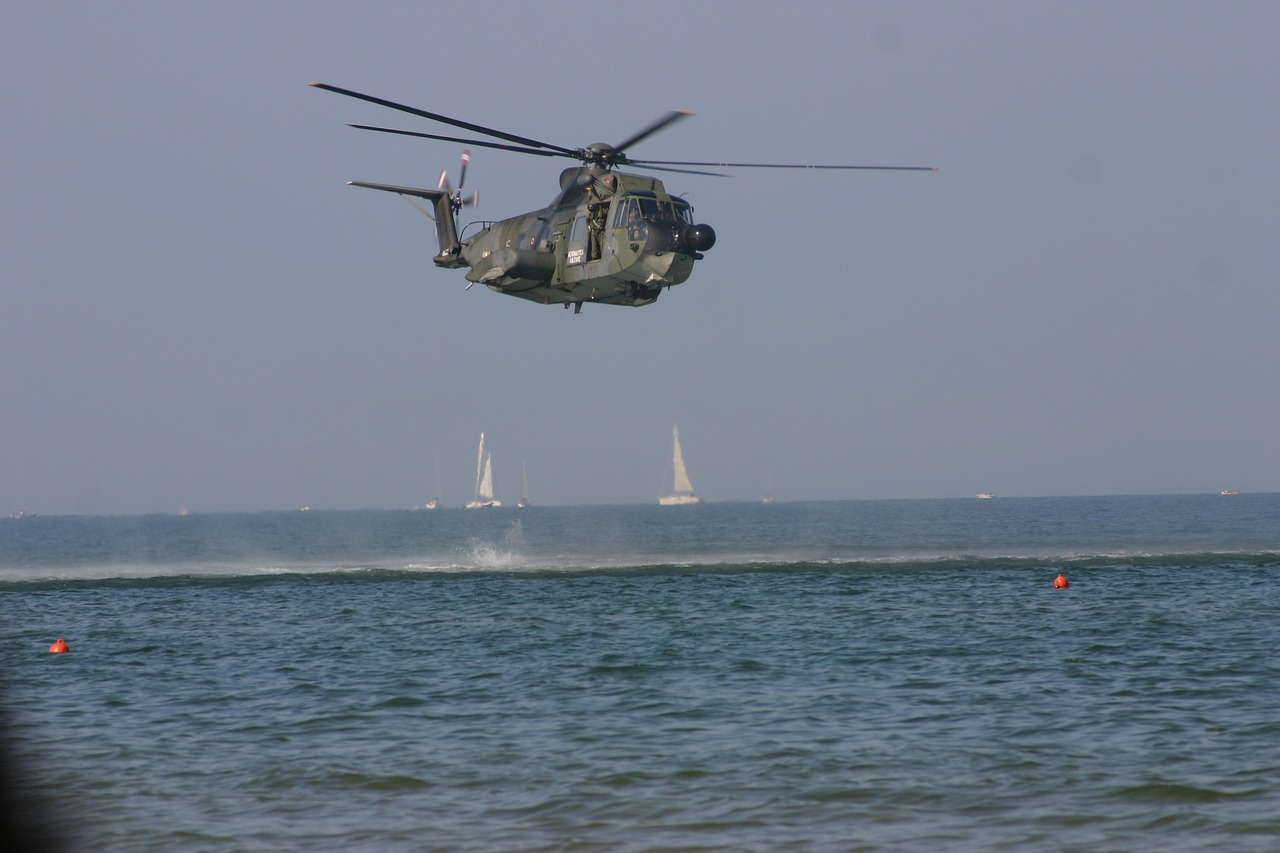
Challenges and Limitations of AI in Combat
While the integration of artificial intelligence (AI) into military operations offers groundbreaking advantages, it is not without its challenges and limitations. One of the most pressing issues is the ethical implications associated with autonomous decision-making systems. For instance, when AI systems are entrusted with critical combat decisions, such as targeting or engagement, the question arises: who is ultimately responsible for these choices? This dilemma can create a moral quagmire, as the potential for unintended consequences increases when human oversight is minimized.
Moreover, data security presents another significant hurdle. In an era where cyber warfare is becoming increasingly prevalent, the reliance on AI systems means that military operations could be vulnerable to hacking or data manipulation. Imagine a scenario where an enemy successfully infiltrates an AI system, altering its data inputs and leading to catastrophic decisions on the battlefield. Such vulnerabilities can undermine the very advantages that AI aims to provide.
Additionally, the effectiveness of AI in combat is heavily dependent on the quality and quantity of data available for analysis. If the data is biased or incomplete, the AI's predictive analytics and decision-making capabilities can be severely compromised. A classic example is the training data used for machine learning algorithms; if it reflects historical biases, the AI may inadvertently perpetuate these biases in its recommendations. Thus, ensuring high-quality, representative data is crucial for the successful deployment of AI technologies in military contexts.
Another challenge is the need for human oversight. As sophisticated as AI may become, it still lacks the nuanced understanding that human commanders possess. In high-stakes environments where split-second decisions can mean the difference between victory and defeat, relying solely on AI could lead to oversights that a human operator might catch. Therefore, maintaining a balance between AI capabilities and human judgment is essential for effective tactical decision-making.
Lastly, the rapid pace of technological advancement poses a challenge for military organizations. Keeping up with the latest AI developments requires constant training and adaptation. As new AI tools are developed, military personnel must be equipped with the knowledge and skills to use them effectively. This ongoing learning curve can strain resources and complicate the integration process.
In summary, while AI holds immense potential to transform military operations and enhance tactical decision-making, it also presents significant challenges that must be addressed. From ethical considerations and data security to the necessity of human oversight, these limitations highlight the importance of a balanced approach to integrating AI in combat scenarios.
- What are the ethical concerns surrounding AI in combat?
Ethical concerns include accountability for decisions made by AI, potential biases in decision-making, and the moral implications of autonomous weapons systems. - How does data security impact AI in military operations?
Data security is crucial as AI systems can be vulnerable to hacking, which could lead to manipulated data and erroneous tactical decisions. - Why is human oversight necessary in AI decision-making?
Human oversight is essential because AI lacks the nuanced understanding and contextual awareness that human commanders possess, which is critical in high-stakes situations. - How can biases in AI training data affect military outcomes?
If AI training data is biased or incomplete, it can lead to skewed predictions and decisions that may not accurately reflect reality, potentially resulting in harmful outcomes. - What are the implications of rapid technological advancements for military personnel?
Rapid advancements necessitate ongoing training and adaptation, which can strain resources and complicate the effective integration of new AI tools.
Frequently Asked Questions
- How is AI transforming tactical decision-making in combat?
AI is revolutionizing tactical decision-making by providing military leaders with real-time data analysis, predictive insights, and enhanced situational awareness. This allows commanders to make informed decisions quickly and effectively, adapting to the ever-changing dynamics of the battlefield.
- What role does real-time data analysis play in military operations?
Real-time data analysis is crucial in military operations as it enables commanders to process vast amounts of information from various sources instantly. This capability helps them understand battlefield dynamics and make timely adjustments to their strategies, ensuring they stay one step ahead of their adversaries.
- How do AI-powered drones enhance combat strategies?
AI-powered drones provide critical aerial surveillance, analyzing enemy movements and terrain. This information supports strategic planning and risk assessment, allowing military leaders to make better-informed decisions regarding troop movements and potential engagements.
- What is predictive analytics in the context of military AI?
Predictive analytics involves using historical data and machine learning techniques to forecast potential enemy actions. By anticipating threats, military leaders can strategize more effectively, preparing for various scenarios before they unfold on the battlefield.
- What are decision support systems in military AI?
Decision support systems are AI-driven tools that assist commanders by simulating various combat scenarios. These systems evaluate different options and recommend optimal strategies based on real-time data, enhancing the decision-making process in high-pressure situations.
- How does AI improve situational awareness in combat?
AI enhances situational awareness by synthesizing information from multiple sources such as satellites, reconnaissance missions, and ground troops. This fusion of data creates a comprehensive operational picture, enabling military personnel to understand the battlefield context more thoroughly.
- What challenges does AI face in military applications?
Despite its advantages, the integration of AI in military decision-making comes with challenges, including ethical considerations, data security concerns, and the critical need for human oversight in situations where decisions can have significant consequences.




